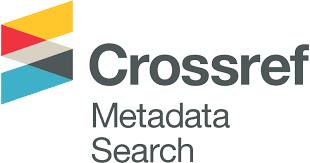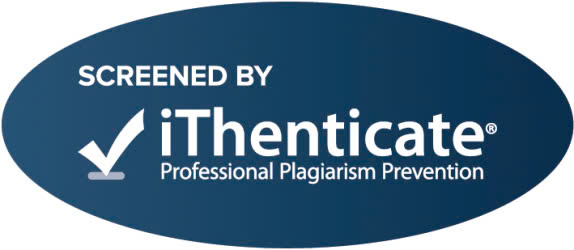Research on sustainable aspects in wire arc additive manufacturing of nickel-based alloy components
Email:
vtle@lqdtu.edu.vn
Từ khóa:
Hệ số phát thải, Khí nhà kính, xe máy, IVE, VSP, Hà Nội
Tóm tắt
In recent decades, metal additive manufacturing (AM) has undergone remarkable advancements and become increasingly significant in manufacturing industries. Among metal AM technologies, wire arc additive manufacturing (WAAM) has great potential for producing medium to large-sized parts and becomes a good choice in the sustainable manufacturing context. This paper aims to analyze the sustainable aspects of WAAM and compare it with CNC machining via the production of an Inconel 625 alloy component. The evaluation is based on life cycle assessment (LCA) and life cycle cost analysis methods. The results demonstrate that WAAM has extremely higher performance in terms of environmental friendliness and economic efficiency versus CNC machining. When the buy-to-fly ratio in CNC machining approach equals 4 and the material utilization factor in WAAM equals 0.8, that the ‘WAAM + CNC machining’ method is approximately three times more environmentally friendly and 3.2 times more cost-effective compared to ‘CNC machining’ pathway. This confirms that WAAM combined with CNC machining is an effective approach to meeting current demands for sustainable productionTài liệu tham khảo
[1]. C. Gao, S. Wolff, S. Wang, Eco-friendly additive manufacturing of metals: Energy efficiency and life cycle analysis, Journal of Manufacturing Systems, 60 (2021) 459–472. https://doi.org/10.1016/j.jmsy.2021.06.011
[2]. B. Blakey-Milner, P. Gradl, G. Snedden, M. Brooks, J. Pitot, E. Lopez, M. Leary, F. Berto, A. du Plessis, Metal additive manufacturing in aerospace: A review, Materials & Design, 209 (2021) 110008. https://doi.org/10.1016/j.matdes.2021.110008
[3]. H. Zhang, R. Li, J. Liu, K. Wang, Q. Weijian, L. Shi, State-of-art review on the process-structure- properties-performance linkage in wire arc additive manufacturing, Virtual and Physical Prototyping, 19 (2024) 1–45. https://doi.org/10.1080/17452759.2024.2390495
[4]. V.T. Le, H. Paris, G. Mandil, Environmental impact assessment of an innovative strategy based on an additive and subtractive manufacturing combination, Journal of Cleaner Production, 164 (2017) 508–523. https://doi.org/10.1016/j.jclepro.2017.06.204
[5]. S. Kokare, J.P. Oliveira, R. Godina, A LCA and LCC analysis of pure subtractive manufacturing, wire arc additive manufacturing, and selective laser melting approaches, Journal of Manufacturing Processes, 101 (2023) 67–85. https://doi.org/10.1016/j.jmapro.2023.05.102
[6]. S. Kokare, J.P. Oliveira, T.G. Santos, R. Godina, Environmental and economic assessment of a steel wall fabricated by wire-based directed energy deposition, Additive Manufacturing, 61 (2023) 103316. https://doi.org/10.1016/j.addma.2022.103316
[7]. A.C.M. Bekker, J.C. Verlinden, Life cycle assessment of wire + arc additive manufacturing compared to green sand casting and CNC milling in stainless steel, Journal of Cleaner Production, 177 (2018) 438–447. https://doi.org/10.1016/j.jclepro.2017.12.148
[8]. R.C. Reis, S. Kokare, J.P. Oliveira, J.C.O. Matias, R. Godina, Life cycle assessment of metal products: A comparison between wire arc additive manufacturing and CNC milling, Advances in Industrial and Manufacturing Engineering, 6 (2023). https://doi.org/10.1016/j.aime.2023.100117
[9]. V. Pusateri, S.I. Olsen, LCA and LCC of wire arc additively manufactured and repaired parts compared to conventional fabrication techniques, Procedia CIRP, 122 (2024) 491–496. https://doi.org/10.1016/j.procir.2024.01.071
[10]. A. Mostafaei, R. Ghiaasiaan, I. Ho, S. Strayer, K. Chang, N. Shamsaei, S. Shao, S. Paul, A. Yeh, S. Tin, A.C. To, Additive Manufacturing of Nickel-based superalloys: a state-of-the-art review on process-structure-defect-property relationship, Progress in Materials Science, (2023) 101108. https://doi.org/10.1016/j.pmatsci.2023.101108
[11]. B. Wu, Z. Pan, D. Ding, D. Cuiuri, H. Li, J. Xu. A review of the wire arc additive manufacturing of metals: properties, defects and quality improvement, Journal of Manufacturing Processes, 35 (2018) 127–39. https://doi.org/10.1016/j.jmapro.2018.08.001
[12]. M. Bhuvanesh Kumar, P. Sathiya, S.M. Senthil, A critical review of wire arc additive manufacturing of nickel-based alloys: principles, process parameters, microstructure, mechanical properties, heat treatment effects, and defects, Journal of the Brazilian Society of Mechanical Sciences and Engineering, 45 (2023) 164. https://doi.org/10.1007/s40430-023-04077-1
[13]. OpenLCA, https://www.openlca.org/ (accessed December 30, 2024).
[14]. OpenLCA Nexus. https://nexus.openlca.org/database/ecoinvent (accessed December 30, 2024).
[15]. Idemat 2024, https://www.ecocostsvalue.com/data-tools-books/ (accessed December 30, 2024).
[16]. S. Kara, W. Li, Unit process energy consumption models for material removal processes, CIRP Annals - Manufacturing Technology, 60 (2011) 37–40. https://doi.org/10.1016/j.cirp.2011.03.018.
[17]. K. Kellens, W. Dewulf, M. Overcash, M.Z. Hauschild, J.R. Duflou, Methodology for systematic analysis and improvement of manufacturing unit process life cycle inventory (UPLCI) CO2PE! initiative (cooperative effort on process emissions in manufacturing). Part 2: Case studies, International Journal of Life Cycle Assessment, 17 (2012) 242–251. https://doi.org/10.1007/s11367-011-0352-0
[18]. J. Näkki, Properties of alloy 625 claddings made with laser and CMT methods, 2018.
[19]. H. Paris, H. Mokhtarian, E. Coatanéa, M. Museau, I.F. Ituarte, Comparative environmental impacts of additive and subtractive manufacturing technologies, CIRP Annals - Manufacturing Technology, 65 (2016) 29–32. https://doi.org/10.1016/j.cirp.2016.04.036
[20]. Price of Inconel 625, https://www.indiamart.com/proddetail/inconel-625-bars-blocks-and-billets-2853076615933.html (accessed December 30, 2024).
[21]. H. Salvi, H. Vesuwala, P. Raval, V. Badheka, N. Khanna, Sustainability analysis of additive + subtractive manufacturing processes for Inconel 625, Sustainable Materials and Technologies, 35 (2023) e00580. https://doi.org/10.1016/j.susmat.2023.e00580
[22]. Price of electricity in VN, https://sunemit.com/gia-ban-le-dien-sinh-hoat-cua-evn-moi-nhat/ (accessed December 30, 2024).
[23]. Price of water in VN, https://xaydungchinhsach.chinhphu.vn/ha-noi-chinh-thuc-tang-gia-nuoc-sach-119230710150335997.htm (accessed December 30, 2024).
[24]. F. Pusavec, D. Kramar, P. Krajnik, J. Kopac, Transitioning to sustainable production – part II: evaluation of sustainable machining technologies, Journal of Cleaner Production, 18 (2010) 1211–1221. https://doi.org/10.1016/J.JCLEPRO.2010.01.015
[2]. B. Blakey-Milner, P. Gradl, G. Snedden, M. Brooks, J. Pitot, E. Lopez, M. Leary, F. Berto, A. du Plessis, Metal additive manufacturing in aerospace: A review, Materials & Design, 209 (2021) 110008. https://doi.org/10.1016/j.matdes.2021.110008
[3]. H. Zhang, R. Li, J. Liu, K. Wang, Q. Weijian, L. Shi, State-of-art review on the process-structure- properties-performance linkage in wire arc additive manufacturing, Virtual and Physical Prototyping, 19 (2024) 1–45. https://doi.org/10.1080/17452759.2024.2390495
[4]. V.T. Le, H. Paris, G. Mandil, Environmental impact assessment of an innovative strategy based on an additive and subtractive manufacturing combination, Journal of Cleaner Production, 164 (2017) 508–523. https://doi.org/10.1016/j.jclepro.2017.06.204
[5]. S. Kokare, J.P. Oliveira, R. Godina, A LCA and LCC analysis of pure subtractive manufacturing, wire arc additive manufacturing, and selective laser melting approaches, Journal of Manufacturing Processes, 101 (2023) 67–85. https://doi.org/10.1016/j.jmapro.2023.05.102
[6]. S. Kokare, J.P. Oliveira, T.G. Santos, R. Godina, Environmental and economic assessment of a steel wall fabricated by wire-based directed energy deposition, Additive Manufacturing, 61 (2023) 103316. https://doi.org/10.1016/j.addma.2022.103316
[7]. A.C.M. Bekker, J.C. Verlinden, Life cycle assessment of wire + arc additive manufacturing compared to green sand casting and CNC milling in stainless steel, Journal of Cleaner Production, 177 (2018) 438–447. https://doi.org/10.1016/j.jclepro.2017.12.148
[8]. R.C. Reis, S. Kokare, J.P. Oliveira, J.C.O. Matias, R. Godina, Life cycle assessment of metal products: A comparison between wire arc additive manufacturing and CNC milling, Advances in Industrial and Manufacturing Engineering, 6 (2023). https://doi.org/10.1016/j.aime.2023.100117
[9]. V. Pusateri, S.I. Olsen, LCA and LCC of wire arc additively manufactured and repaired parts compared to conventional fabrication techniques, Procedia CIRP, 122 (2024) 491–496. https://doi.org/10.1016/j.procir.2024.01.071
[10]. A. Mostafaei, R. Ghiaasiaan, I. Ho, S. Strayer, K. Chang, N. Shamsaei, S. Shao, S. Paul, A. Yeh, S. Tin, A.C. To, Additive Manufacturing of Nickel-based superalloys: a state-of-the-art review on process-structure-defect-property relationship, Progress in Materials Science, (2023) 101108. https://doi.org/10.1016/j.pmatsci.2023.101108
[11]. B. Wu, Z. Pan, D. Ding, D. Cuiuri, H. Li, J. Xu. A review of the wire arc additive manufacturing of metals: properties, defects and quality improvement, Journal of Manufacturing Processes, 35 (2018) 127–39. https://doi.org/10.1016/j.jmapro.2018.08.001
[12]. M. Bhuvanesh Kumar, P. Sathiya, S.M. Senthil, A critical review of wire arc additive manufacturing of nickel-based alloys: principles, process parameters, microstructure, mechanical properties, heat treatment effects, and defects, Journal of the Brazilian Society of Mechanical Sciences and Engineering, 45 (2023) 164. https://doi.org/10.1007/s40430-023-04077-1
[13]. OpenLCA, https://www.openlca.org/ (accessed December 30, 2024).
[14]. OpenLCA Nexus. https://nexus.openlca.org/database/ecoinvent (accessed December 30, 2024).
[15]. Idemat 2024, https://www.ecocostsvalue.com/data-tools-books/ (accessed December 30, 2024).
[16]. S. Kara, W. Li, Unit process energy consumption models for material removal processes, CIRP Annals - Manufacturing Technology, 60 (2011) 37–40. https://doi.org/10.1016/j.cirp.2011.03.018.
[17]. K. Kellens, W. Dewulf, M. Overcash, M.Z. Hauschild, J.R. Duflou, Methodology for systematic analysis and improvement of manufacturing unit process life cycle inventory (UPLCI) CO2PE! initiative (cooperative effort on process emissions in manufacturing). Part 2: Case studies, International Journal of Life Cycle Assessment, 17 (2012) 242–251. https://doi.org/10.1007/s11367-011-0352-0
[18]. J. Näkki, Properties of alloy 625 claddings made with laser and CMT methods, 2018.
[19]. H. Paris, H. Mokhtarian, E. Coatanéa, M. Museau, I.F. Ituarte, Comparative environmental impacts of additive and subtractive manufacturing technologies, CIRP Annals - Manufacturing Technology, 65 (2016) 29–32. https://doi.org/10.1016/j.cirp.2016.04.036
[20]. Price of Inconel 625, https://www.indiamart.com/proddetail/inconel-625-bars-blocks-and-billets-2853076615933.html (accessed December 30, 2024).
[21]. H. Salvi, H. Vesuwala, P. Raval, V. Badheka, N. Khanna, Sustainability analysis of additive + subtractive manufacturing processes for Inconel 625, Sustainable Materials and Technologies, 35 (2023) e00580. https://doi.org/10.1016/j.susmat.2023.e00580
[22]. Price of electricity in VN, https://sunemit.com/gia-ban-le-dien-sinh-hoat-cua-evn-moi-nhat/ (accessed December 30, 2024).
[23]. Price of water in VN, https://xaydungchinhsach.chinhphu.vn/ha-noi-chinh-thuc-tang-gia-nuoc-sach-119230710150335997.htm (accessed December 30, 2024).
[24]. F. Pusavec, D. Kramar, P. Krajnik, J. Kopac, Transitioning to sustainable production – part II: evaluation of sustainable machining technologies, Journal of Cleaner Production, 18 (2010) 1211–1221. https://doi.org/10.1016/J.JCLEPRO.2010.01.015
Tải xuống
Chưa có dữ liệu thống kê

Nhận bài
04/03/2025
Nhận bài sửa
31/03/2025
Chấp nhận đăng
10/04/2025
Xuất bản
15/05/2025
Chuyên mục
Công trình khoa học
Kiểu trích dẫn
Le Van, T., Hoang Minh, P., Doan Tat, K., Le Duc, A., Dang Van, T., & Mai Dinh, S. (1747242000). Research on sustainable aspects in wire arc additive manufacturing of nickel-based alloy components. Tạp Chí Khoa Học Giao Thông Vận Tải, 76(4), 474-488. https://doi.org/10.47869/tcsj.76.4.3
Số lần xem tóm tắt
178
Số lần xem bài báo
65









